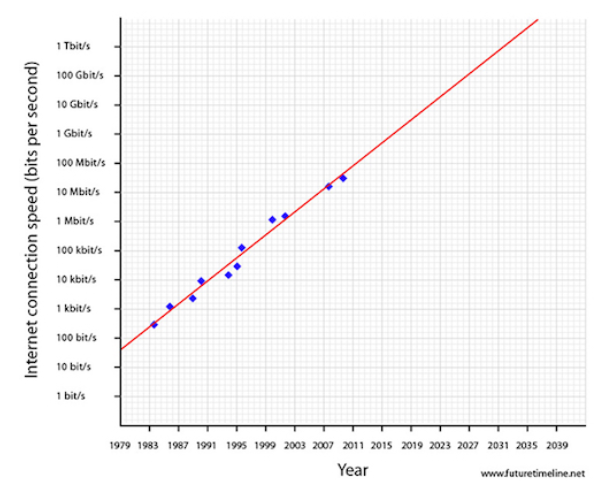Multi-gigabit speeds now are becoming the top-end broadband offers in the U.S. market. Comcast has introduced 3-Gbps services for business. Ziply has introduced symmetrical 2-Gbps service. Google Fiber has added 2-Gbps as well.
Frontier Communications is doing the same. Verizon offers 2-Gbps Fios service. AT&T sells both 5-Gbps and 2-Gbps service. Many of those offers feature symmetrical bandwidth.
That is not to say most consumers will ever buy the top-end service packages. Indeed, whatever the top end, most consumers buy plans in the middle ranges of performance and price.
None of that should come as a surprise. U.S. internet bandwidth increases at just about the rate one would expect from Moore's Law. In the broadband business we have Nielsen's Law, which suggests speeds have a growth rate nearly 50 percent per year at the top end.
Nielsen’s Law has operated since the days of dial-up internet access. Even if the “typical” consumer buys speeds an order of magnitude less than the headline speed, that still suggests the typical consumer--at a time when the fastest-possible speed is 100 Gbps to 1,000 Gbps--still will be buying service operating at speeds not less than 1 Gbps to 10 Gbps.
So top end speeds in the terabits per second are virtually inevitable by about 2050. The emergence of offers between 2 Gbps and 5 Gbps now is simply evidence that the trend continues.


No comments:
Post a Comment